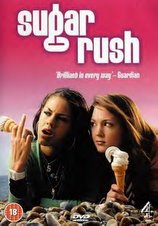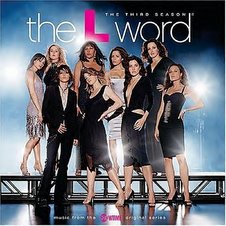Sheilas Wheels
Thursday 29 November 2007
5 ADVERTS
Thursday 22 November 2007
10 NEW media Keywods and my own deifintion x
Content Analysis -analyising the media text that you are studying, looking at theories, representaion and other Key Concepts.
Male Gaze - The way that women are portrayed and stereotypes, as objects representing sexuality.
Bimbo - Conotations of a female that has blond hair as being promiscuous, stupid, uneducated, helpless.
Digital Manipulation - Certain body parts are altered and manipulated to suggest suxual arousal, a technique used in Sugar Rush
Indocridate - Taking in forms of media and ideas without questioning it... Passive audiences
Pluralistic Model - Sees the society as diverse and full of choices. This related to Sugar Rush as the characters are open about the homosexuality.
Channel 4 - Independant commercial television chennel established in 1982 under the Independant Broadcasting Authority.
Culteral Effects theory - focuses on the different ways in which audiences respond to media content
Male Gaze - The way that women are portrayed and stereotypes, as objects representing sexuality.
Bimbo - Conotations of a female that has blond hair as being promiscuous, stupid, uneducated, helpless.
Digital Manipulation - Certain body parts are altered and manipulated to suggest suxual arousal, a technique used in Sugar Rush
Indocridate - Taking in forms of media and ideas without questioning it... Passive audiences
Pluralistic Model - Sees the society as diverse and full of choices. This related to Sugar Rush as the characters are open about the homosexuality.
Channel 4 - Independant commercial television chennel established in 1982 under the Independant Broadcasting Authority.
Culteral Effects theory - focuses on the different ways in which audiences respond to media content
Monday 19 November 2007
WoRkIn WiTh kArInAa x
The areas of research we will be working on are :
Theorists especially Feminist theories such as Laura Mulvey
The history of Women in the media and how they are represented including important dates
Other films and programmes that interprete women in different ways.
Theorists especially Feminist theories such as Laura Mulvey
The history of Women in the media and how they are represented including important dates
Other films and programmes that interprete women in different ways.
Thursday 15 November 2007
Tuesday 13 November 2007
Lauraa Mulvey Research
As a film theorist
Mulvey is best known for her essay, "Visual Pleasure and Narrative Cinema", written in 1973 and published in 1975 in the influential British film theory journal Screen. It later appeared in a collection of her essays entitled Visual and Other Pleasures, and numerous other anthologies. Her article was one of the first major essays that helped shift the orientation of film theory towards a psychoanalytic framework, influenced by the theories of Sigmund Freud and Jacques Lacan. Prior to Mulvey, film theorists such as Jean-Louis Baudry and Christian Metz had attempted to use psychoanalytic ideas in their theoretical accounts of the cinema, but Mulvey's contribution was to inaugurate the intersection of film theory, psychoanalysis, and feminism.
Mulvey's article engaged in no empirical research of film audiences. She instead stated that she intended to make a "political use" of Freud and Lacan, and then used some of their concepts to argue that the cinematic apparatus of classical Hollywood cinema inevitably put the spectator in a masculine subject position, with the figure of the woman on screen as the object of desire. In the era of classical Hollywood cinema, viewers were encouraged to identify with the protagonist of the film, who tended to be a man. Meanwhile, Hollywood female characters of the 1950s and 60s were, according to Mulvey, coded with "to-be-looked-at-ness." Mulvey suggests that there were two distinct modes of the male gaze of this era: "voyeuristic" (i.e. seeing women as 'whores') and "fetishistic" (i.e. seeing women as 'madonnas').
Mulvey argued that the only way to annihilate the "patriarchal" Hollywood system was to radically challenge and re-shape the filmic strategies of classical Hollywood with alternative feminist methods. She called for a new feminist avant-garde filmmaking that would rupture the magic and pleasure of classical Hollywood filmmaking. She wrote, "It is said that analysing pleasure or beauty annihilates it. That is the intention of this article".
Radical feminists made a major criticism of "Visual Pleasure and Narrative Cinema". They claimed that, while Mulvey believed that classical Hollywood cinema reflected and shaped the "patriarchal order", the perspective of her writing actually remained within that very heterosexual order. The article was thus said to have contradicted its "radical" claims, by actually being a covert perpetuation of heterosexual patriarchal order. This was because, in her article, Mulvey presupposes the spectator to be a heterosexual man. She was thus felt to be denying the existence of lesbian women and even heterosexual women.
"Visual Pleasure and Narrative Cinema" was the subject of much interdisciplinary discussion among film theorists that continued into the mid 1980s. Critics of the article objected to the fact that her argument implied the impossibility of genuine 'feminine' enjoyment of the classical Hollywood cinema, and to the fact that her argument did not seem to take into account spectatorships that were not organised along the normative lines of gender. For example, a metaphoric 'transvestism' might be possible when viewing a film – a male viewer might enjoy a 'feminine' point-of-view provided by a film, or vice versa; gay, lesbian and bisexual spectatorships might also be different. Her article also did not take into account the findings of the later wave of media audience studies on the complex nature of fan cultures and their interaction with stars. Gay male film theorists such as Richard Dyer have used Mulvey's work as a starting point to explore the complex projections that many gay men fix onto certain female stars (e.g. Liza Minnelli, Greta Garbo, Judy Garland).
Mulvey later wrote that her article was meant to be a provocation or a manifesto, rather than a reasoned academic article that took all objections into account. She addressed many of her critics, and changed some of her opinions, in a follow-up article, "Afterthoughts on 'Visual Pleasure and Narrative Cinema'" (which also appears in the Visual and Other Pleasures collection).
Mulvey's most recent book is titled Death 24x a Second: Stillness and the Moving Image (2006).
Mulvey is best known for her essay, "Visual Pleasure and Narrative Cinema", written in 1973 and published in 1975 in the influential British film theory journal Screen. It later appeared in a collection of her essays entitled Visual and Other Pleasures, and numerous other anthologies. Her article was one of the first major essays that helped shift the orientation of film theory towards a psychoanalytic framework, influenced by the theories of Sigmund Freud and Jacques Lacan. Prior to Mulvey, film theorists such as Jean-Louis Baudry and Christian Metz had attempted to use psychoanalytic ideas in their theoretical accounts of the cinema, but Mulvey's contribution was to inaugurate the intersection of film theory, psychoanalysis, and feminism.
Mulvey's article engaged in no empirical research of film audiences. She instead stated that she intended to make a "political use" of Freud and Lacan, and then used some of their concepts to argue that the cinematic apparatus of classical Hollywood cinema inevitably put the spectator in a masculine subject position, with the figure of the woman on screen as the object of desire. In the era of classical Hollywood cinema, viewers were encouraged to identify with the protagonist of the film, who tended to be a man. Meanwhile, Hollywood female characters of the 1950s and 60s were, according to Mulvey, coded with "to-be-looked-at-ness." Mulvey suggests that there were two distinct modes of the male gaze of this era: "voyeuristic" (i.e. seeing women as 'whores') and "fetishistic" (i.e. seeing women as 'madonnas').
Mulvey argued that the only way to annihilate the "patriarchal" Hollywood system was to radically challenge and re-shape the filmic strategies of classical Hollywood with alternative feminist methods. She called for a new feminist avant-garde filmmaking that would rupture the magic and pleasure of classical Hollywood filmmaking. She wrote, "It is said that analysing pleasure or beauty annihilates it. That is the intention of this article".
Radical feminists made a major criticism of "Visual Pleasure and Narrative Cinema". They claimed that, while Mulvey believed that classical Hollywood cinema reflected and shaped the "patriarchal order", the perspective of her writing actually remained within that very heterosexual order. The article was thus said to have contradicted its "radical" claims, by actually being a covert perpetuation of heterosexual patriarchal order. This was because, in her article, Mulvey presupposes the spectator to be a heterosexual man. She was thus felt to be denying the existence of lesbian women and even heterosexual women.
"Visual Pleasure and Narrative Cinema" was the subject of much interdisciplinary discussion among film theorists that continued into the mid 1980s. Critics of the article objected to the fact that her argument implied the impossibility of genuine 'feminine' enjoyment of the classical Hollywood cinema, and to the fact that her argument did not seem to take into account spectatorships that were not organised along the normative lines of gender. For example, a metaphoric 'transvestism' might be possible when viewing a film – a male viewer might enjoy a 'feminine' point-of-view provided by a film, or vice versa; gay, lesbian and bisexual spectatorships might also be different. Her article also did not take into account the findings of the later wave of media audience studies on the complex nature of fan cultures and their interaction with stars. Gay male film theorists such as Richard Dyer have used Mulvey's work as a starting point to explore the complex projections that many gay men fix onto certain female stars (e.g. Liza Minnelli, Greta Garbo, Judy Garland).
Mulvey later wrote that her article was meant to be a provocation or a manifesto, rather than a reasoned academic article that took all objections into account. She addressed many of her critics, and changed some of her opinions, in a follow-up article, "Afterthoughts on 'Visual Pleasure and Narrative Cinema'" (which also appears in the Visual and Other Pleasures collection).
Mulvey's most recent book is titled Death 24x a Second: Stillness and the Moving Image (2006).
As a film theorist
Mulvey is best known for her essay, "Visual Pleasure and Narrative Cinema", written in 1973 and published in 1975 in the influential British film theory journal Screen. It later appeared in a collection of her essays entitled Visual and Other Pleasures, and numerous other anthologies. Her article was one of the first major essays that helped shift the orientation of film theory towards a psychoanalytic framework, influenced by the theories of Sigmund Freud and Jacques Lacan. Prior to Mulvey, film theorists such as Jean-Louis Baudry and Christian Metz had attempted to use psychoanalytic ideas in their theoretical accounts of the cinema, but Mulvey's contribution was to inaugurate the intersection of film theory, psychoanalysis, and feminism.
Mulvey's article engaged in no empirical research of film audiences. She instead stated that she intended to make a "political use" of Freud and Lacan, and then used some of their concepts to argue that the cinematic apparatus of classical Hollywood cinema inevitably put the spectator in a masculine subject position, with the figure of the woman on screen as the object of desire. In the era of classical Hollywood cinema, viewers were encouraged to identify with the protagonist of the film, who tended to be a man. Meanwhile, Hollywood female characters of the 1950s and 60s were, according to Mulvey, coded with "to-be-looked-at-ness." Mulvey suggests that there were two distinct modes of the male gaze of this era: "voyeuristic" (i.e. seeing women as 'whores') and "fetishistic" (i.e. seeing women as 'madonnas').
Mulvey argued that the only way to annihilate the "patriarchal" Hollywood system was to radically challenge and re-shape the filmic strategies of classical Hollywood with alternative feminist methods. She called for a new feminist avant-garde filmmaking that would rupture the magic and pleasure of classical Hollywood filmmaking. She wrote, "It is said that analysing pleasure or beauty annihilates it. That is the intention of this article".
Radical feminists made a major criticism of "Visual Pleasure and Narrative Cinema". They claimed that, while Mulvey believed that classical Hollywood cinema reflected and shaped the "patriarchal order", the perspective of her writing actually remained within that very heterosexual order. The article was thus said to have contradicted its "radical" claims, by actually being a covert perpetuation of heterosexual patriarchal order. This was because, in her article, Mulvey presupposes the spectator to be a heterosexual man. She was thus felt to be denying the existence of lesbian women and even heterosexual women.
"Visual Pleasure and Narrative Cinema" was the subject of much interdisciplinary discussion among film theorists that continued into the mid 1980s. Critics of the article objected to the fact that her argument implied the impossibility of genuine 'feminine' enjoyment of the classical Hollywood cinema, and to the fact that her argument did not seem to take into account spectatorships that were not organised along the normative lines of gender. For example, a metaphoric 'transvestism' might be possible when viewing a film – a male viewer might enjoy a 'feminine' point-of-view provided by a film, or vice versa; gay, lesbian and bisexual spectatorships might also be different. Her article also did not take into account the findings of the later wave of media audience studies on the complex nature of fan cultures and their interaction with stars. Gay male film theorists such as Richard Dyer have used Mulvey's work as a starting point to explore the complex projections that many gay men fix onto certain female stars (e.g. Liza Minnelli, Greta Garbo, Judy Garland).
Mulvey later wrote that her article was meant to be a provocation or a manifesto, rather than a reasoned academic article that took all objections into account. She addressed many of her critics, and changed some of her opinions, in a follow-up article, "Afterthoughts on 'Visual Pleasure and Narrative Cinema'" (which also appears in the Visual and Other Pleasures collection).
Mulvey's most recent book is titled Death 24x a Second: Stillness and the Moving Image (2006).
Mulvey is best known for her essay, "Visual Pleasure and Narrative Cinema", written in 1973 and published in 1975 in the influential British film theory journal Screen. It later appeared in a collection of her essays entitled Visual and Other Pleasures, and numerous other anthologies. Her article was one of the first major essays that helped shift the orientation of film theory towards a psychoanalytic framework, influenced by the theories of Sigmund Freud and Jacques Lacan. Prior to Mulvey, film theorists such as Jean-Louis Baudry and Christian Metz had attempted to use psychoanalytic ideas in their theoretical accounts of the cinema, but Mulvey's contribution was to inaugurate the intersection of film theory, psychoanalysis, and feminism.
Mulvey's article engaged in no empirical research of film audiences. She instead stated that she intended to make a "political use" of Freud and Lacan, and then used some of their concepts to argue that the cinematic apparatus of classical Hollywood cinema inevitably put the spectator in a masculine subject position, with the figure of the woman on screen as the object of desire. In the era of classical Hollywood cinema, viewers were encouraged to identify with the protagonist of the film, who tended to be a man. Meanwhile, Hollywood female characters of the 1950s and 60s were, according to Mulvey, coded with "to-be-looked-at-ness." Mulvey suggests that there were two distinct modes of the male gaze of this era: "voyeuristic" (i.e. seeing women as 'whores') and "fetishistic" (i.e. seeing women as 'madonnas').
Mulvey argued that the only way to annihilate the "patriarchal" Hollywood system was to radically challenge and re-shape the filmic strategies of classical Hollywood with alternative feminist methods. She called for a new feminist avant-garde filmmaking that would rupture the magic and pleasure of classical Hollywood filmmaking. She wrote, "It is said that analysing pleasure or beauty annihilates it. That is the intention of this article".
Radical feminists made a major criticism of "Visual Pleasure and Narrative Cinema". They claimed that, while Mulvey believed that classical Hollywood cinema reflected and shaped the "patriarchal order", the perspective of her writing actually remained within that very heterosexual order. The article was thus said to have contradicted its "radical" claims, by actually being a covert perpetuation of heterosexual patriarchal order. This was because, in her article, Mulvey presupposes the spectator to be a heterosexual man. She was thus felt to be denying the existence of lesbian women and even heterosexual women.
"Visual Pleasure and Narrative Cinema" was the subject of much interdisciplinary discussion among film theorists that continued into the mid 1980s. Critics of the article objected to the fact that her argument implied the impossibility of genuine 'feminine' enjoyment of the classical Hollywood cinema, and to the fact that her argument did not seem to take into account spectatorships that were not organised along the normative lines of gender. For example, a metaphoric 'transvestism' might be possible when viewing a film – a male viewer might enjoy a 'feminine' point-of-view provided by a film, or vice versa; gay, lesbian and bisexual spectatorships might also be different. Her article also did not take into account the findings of the later wave of media audience studies on the complex nature of fan cultures and their interaction with stars. Gay male film theorists such as Richard Dyer have used Mulvey's work as a starting point to explore the complex projections that many gay men fix onto certain female stars (e.g. Liza Minnelli, Greta Garbo, Judy Garland).
Mulvey later wrote that her article was meant to be a provocation or a manifesto, rather than a reasoned academic article that took all objections into account. She addressed many of her critics, and changed some of her opinions, in a follow-up article, "Afterthoughts on 'Visual Pleasure and Narrative Cinema'" (which also appears in the Visual and Other Pleasures collection).
Mulvey's most recent book is titled Death 24x a Second: Stillness and the Moving Image (2006).
Thursday 8 November 2007
Jellys Summary on Representation Of woman
Summary Of Representations of Gender in The past
Each week a new set of movies is released. Magazines Newspapers, adverts and even songs on the radio challenge our ideas about Gender.
Gunter (1995) and Elasmar (1999) provide useful summaries of representation of woman.
In the 1950’s, 1960’s and 1970s only 20 to 35 percent of characters were female. By the mid – 1980’s there were more women in leading roles but there were still twice as more men on screen.
In the Mid 1970’s, Miles (1975) found that there were nearly equal proportions of men and women in situation comedies however humour could still be traditional and sexist.
A study by McNeil (1975) concluded that the women’s movement had been largely idnored by television, with housewives being the main female roles. Women interaction were concerned with romance or family.
He also found in other studies in the 1970’s men were dominant characters and decision makers and men were twice as likely to make decisions or to give orders. Overall men were more likely to be assertive (or aggressive) whilst women were more likely to be passive.
American television tells viewers that women don’t matter as much in American society.
Tuchman asserts that those women who were shown to be working were portrayed as incompetents and inferiors as victims or having trivial interests.
Television in the Mid 1980’s is increasingly taking women seriously and there are are number of programmes that feature women in a more central what such as Sugar rush :D . There are documentaries and programmers on topics such as Breastcancer, rape etc.
Gillian Dyer Observed that the number of women in central roles and police and crime series had increased.
Each week a new set of movies is released. Magazines Newspapers, adverts and even songs on the radio challenge our ideas about Gender.
Gunter (1995) and Elasmar (1999) provide useful summaries of representation of woman.
In the 1950’s, 1960’s and 1970s only 20 to 35 percent of characters were female. By the mid – 1980’s there were more women in leading roles but there were still twice as more men on screen.
In the Mid 1970’s, Miles (1975) found that there were nearly equal proportions of men and women in situation comedies however humour could still be traditional and sexist.
A study by McNeil (1975) concluded that the women’s movement had been largely idnored by television, with housewives being the main female roles. Women interaction were concerned with romance or family.
He also found in other studies in the 1970’s men were dominant characters and decision makers and men were twice as likely to make decisions or to give orders. Overall men were more likely to be assertive (or aggressive) whilst women were more likely to be passive.
American television tells viewers that women don’t matter as much in American society.
Tuchman asserts that those women who were shown to be working were portrayed as incompetents and inferiors as victims or having trivial interests.
Television in the Mid 1980’s is increasingly taking women seriously and there are are number of programmes that feature women in a more central what such as Sugar rush :D . There are documentaries and programmers on topics such as Breastcancer, rape etc.
Gillian Dyer Observed that the number of women in central roles and police and crime series had increased.
Task Ten Book Research
Ten Books i have researched
'The Radio Broadcasting Industry'
Authors - Alan B Albarran
Gregory G Pitts
'The Film and Television Handbook'(2000)
BFI institute edited by Eddie Dyja
'The World of Cinema'
Christopher Kenworthy
'Introduction to media Production'
Gorham Kindem
Robert B. Musburger
Second Edition
'The Film Studies Dictionary'
Steve Blandford
Barry Keith Grant
Jim Hillier
'The Radio Broadcasting Industry'
Authors - Alan B Albarran
Gregory G Pitts
'The Film and Television Handbook'(2000)
BFI institute edited by Eddie Dyja
'The World of Cinema'
Christopher Kenworthy
'Introduction to media Production'
Gorham Kindem
Robert B. Musburger
Second Edition
'The Film Studies Dictionary'
Steve Blandford
Barry Keith Grant
Jim Hillier
Friday 2 November 2007
Subscribe to:
Posts (Atom)
x WeLcOmE x

Sugar

Sugar
Related Text

L word
Related texts

Desperate Housewifes
Related Texts

Hollyoaks
Blog Archive
-
▼
2007
(30)
-
▼
November
(11)
- 5 ADVERTS
- Online Research
- 10 NEW media Keywods and my own deifintion x
- WoRkIn WiTh kArInAa x
- My Blog Buddiess areeeee.....
- Blog Buddies
- Lauraa Mulvey Research
- As a film theoristMulvey is best known for her ess...
- Jellys Summary on Representation Of woman
- Task Ten Book Research
- Task 9 - bLoG BuDdIeSx
-
▼
November
(11)